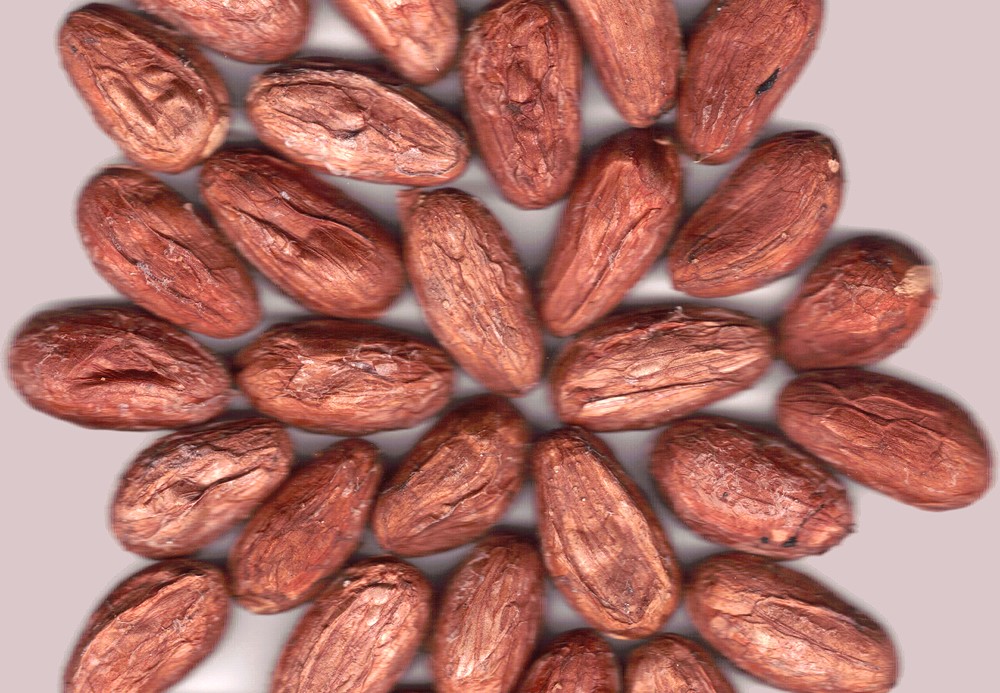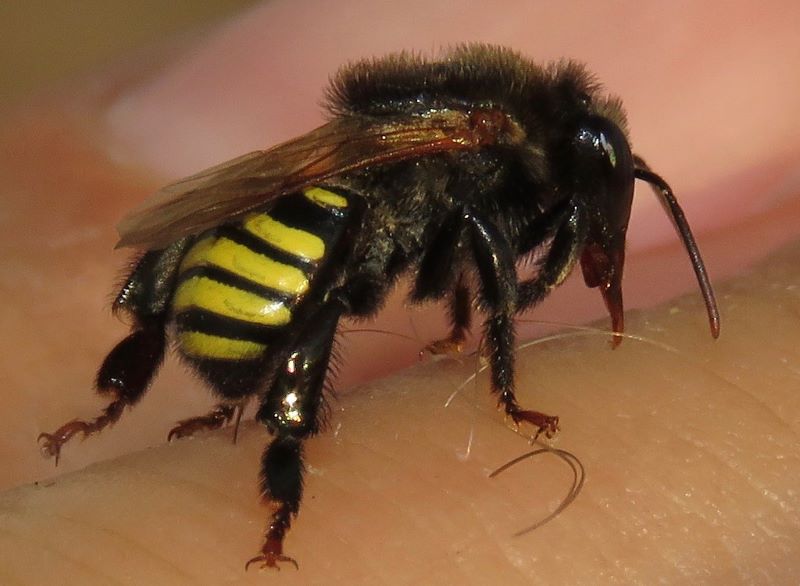


Cocoa bean husks are rich in theobromine and caffeine (photo: Wilfredor/Wikimedia Commons)
Published on 10/07/2024
By Ricardo Muniz | Agência FAPESP – An innovative process developed by scientists at the State University of Campinas (UNICAMP) in Brazil uses honey produced by stingless bees to extract theobromine and caffeine efficiently from cocoa bean husks. These two compounds can be used in food products and cosmetics.
Cocoa bean husks are particularly rich in theobromine and caffeine, but conventional extraction methods frequently involve the use of solvents that can be harmful to human health and the environment. Handling the solvents is also complex and time-consuming.
Development of the invention was led by Felipe Sanchez Bragagnolo, who breeds stingless bees as a hobby (meliponiculture). He is especially fond of Melipona quadrifasciata, a species native to Brazil, where it is known as mandaçaia.
The project was part of Bragagnolo’s postdoctoral research. Monique Martins Strieder and Leonardo Mendes de Souza Mesquita collaborated, and Maurício Ariel Rostagno supervised. The group receives research funding from FAPESP (projects 19/13496-0 and 18/14582-5).

Melipona quadrifasciata, a stingless bee native to Brazil, where it is known as mandaçaia (photo: Rich Hoyer)
“The proposed innovation offers a method of extraction assisted by high-intensity ultrasound and uses mandaçaia honey as a natural solvent. This eliminates the use of hazardous organic solvents and simplifies extraction, making the process faster and more sustainable,” said Rostagno, an inventor with 17 patents. He graduated in agronomy from the Federal University of Lavras (UFLA) in Brazil, has a master’s degree in food science from UFLA and a master’s in viticulture and winemaking, and a PhD in chemistry from the University of Cadiz in Spain.
Valuable residues
Agricultural residues are increasingly recognized as sources of valuable compounds. Theobromine, a central nervous system stimulant with similar, albeit milder, action to caffeine, is the main compound in cocoa beans.
“These residues are typically thrown away or underutilized. By extracting them, we not only reduce the volume of agricultural waste but also promote a circular economy and mitigate the environmental impact of dumping them as trash,” said Rostagno, who is a professor at the School of Applied Sciences (FCA-UNICAMP) in Limeira, São Paulo state. He specializes in food technology, composition and analysis via the institution’s Multidisciplinary Food and Health Laboratory (LabMAS).
One of the principles of so-called green chemistry is eliminating toxic solvents and process and product contaminants. “Although solvents such as methanol, acetone and hexane are legal, residues left in food products may be harmful to human health and should be avoided to protect consumers as well as technical personnel involved in extraction and exposed to contact or vapor,” Rostagno said.
Stingless bee honey is a natural solvent and also beneficial to human health owing to its antibacterial, antioxidant and nutritional properties. Its use as a solvent, according to Rostagno, makes the process more sustainable and enriches a great many end-products. “It can be used to formulate cosmetics for healthy skin and hair, for example,” he said, and as an energy booster in nutraceuticals.
Ultrasound-assisted extraction in conjunction with the use of stingless bee honey intensifies the efficiency and speed of the process while resulting in higher yields of theobromine and caffeine. “Moreover, the final extract doesn’t need to be dried, simplifying the process still further,” he said.
Marketing also benefits, he added, since local biodiversity is valorized by the use of mandaçaia honey, in addition to extraction of valuable compounds with efficiency and sustainability. “This contributes to product differentiation and authenticity,” Rostagno said.
A patent application was filed with Brazil’s National Industrial Property Institute (INPI) in March (no. BR 10 2004 005638 8).
Source: https://agencia.fapesp.br/52969